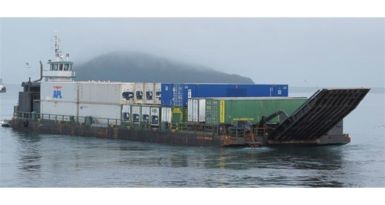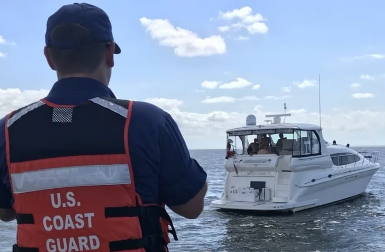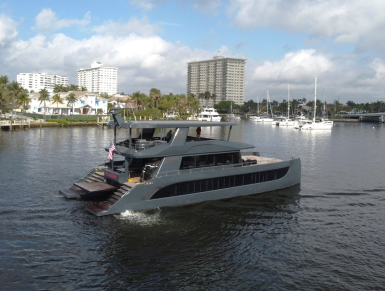
The US National Transportation Safety Board (NTSB) has published a report into the grounding of barge Cordova Provider earlier this year.
What Happened
On January 11, 2025, at 0250 local time, the integrated tug and barge Krystal Sea/Cordova Provider was transiting Prince William Sound when the four lines connecting the tug to the barge parted, causing the barge to uncouple from the tug. The barge drifted, eventually grounding on the coast of Axel Lind Island, Alaska, about 0635. There were no injuries, and no pollution was reported. The barge Cordova Provider, valued at $2.9 million, was declared a constructive total loss by the vessel’s owner. The Krystal Sea was not damaged.
The report added that when the lines parted, the seas were 4–6 feet with about 35-knot winds on the vessel’s port quarter, weather conditions that the vessel regularly encountered on its normal transit route. Since it was nighttime when the incident occurred, the mate and crewmember in the wheelhouse did not see what caused the lines to part or which line parted first.
Five days before the casualty, the captain visually inspected the four push lines and noted no deficiencies. A postcasualty visual inspection of the recovered lines by a technician from a local industrial and maritime supply company found that the lines were in fair condition with no visible deficiencies and determined that all the push lines and the soft shackle parted due to the lines exceeding their breaking strength, likely due to shock loading. Given that the ITB was in regularly encountered conditions and the lines were reported as properly rigged, it is undetermined how the first push line that parted was shock loaded. Once the first push line parted, this likely began a cascading failure as the remaining three push lines took up the additional strain.
Cause
We determined that the probable cause of the grounding of the barge Cordova Provider was due to shock loading that led to the parting of the push lines connecting the Cordova Provider to the tug Krystal Sea.
Read the report: NTSB report-MIR 25-32

